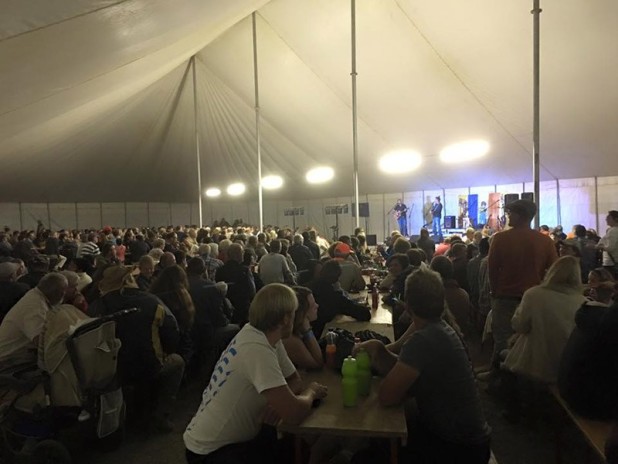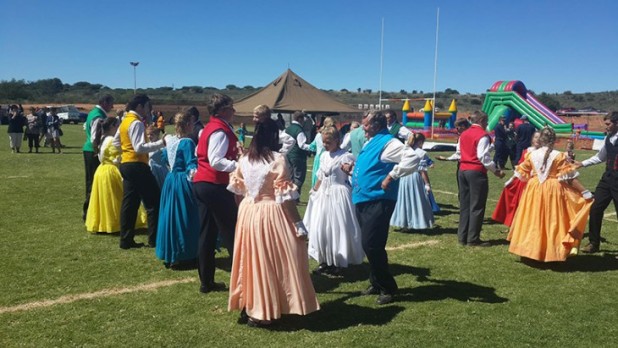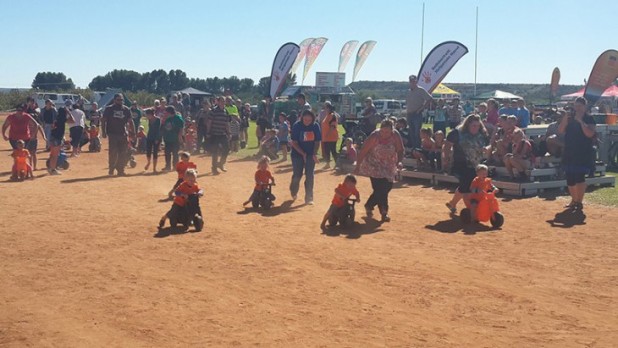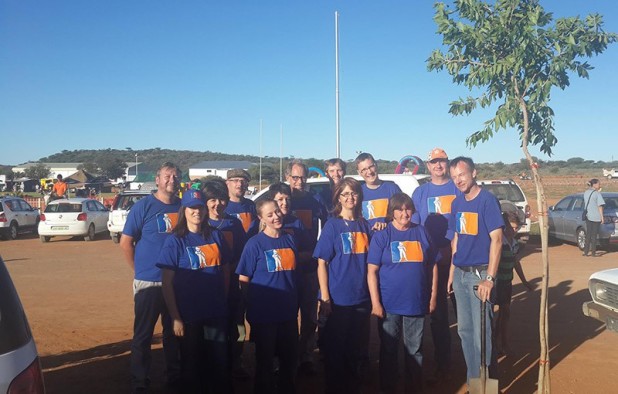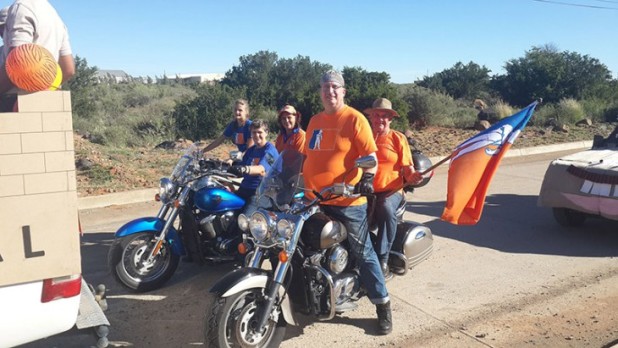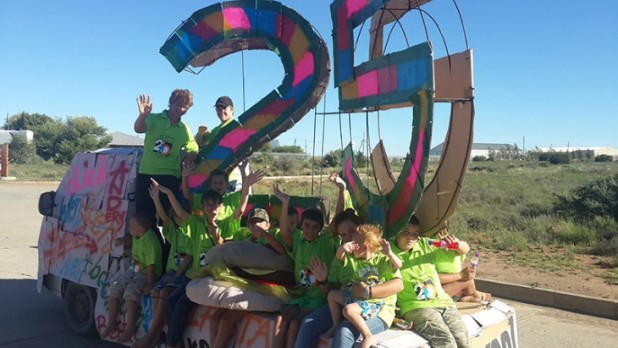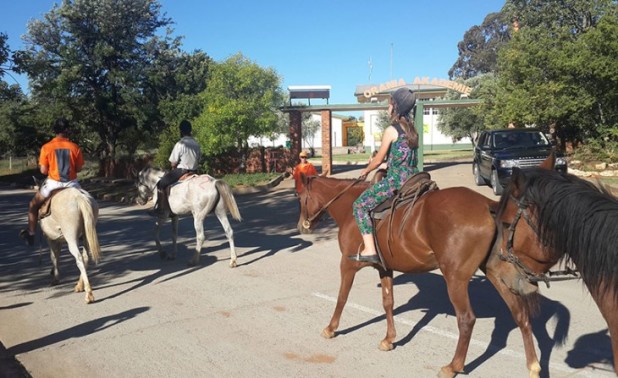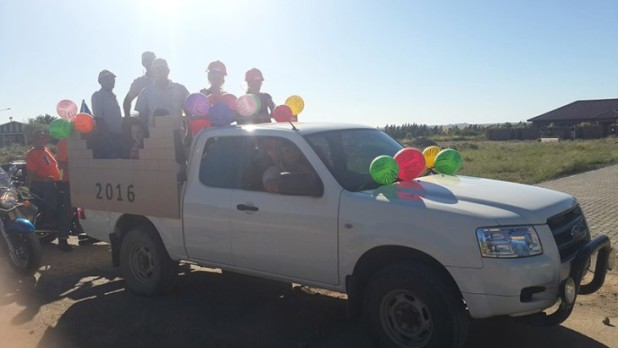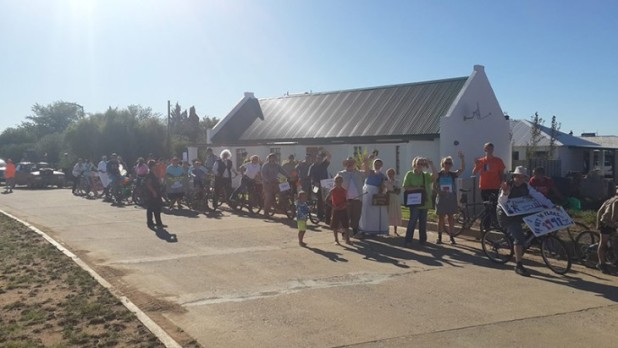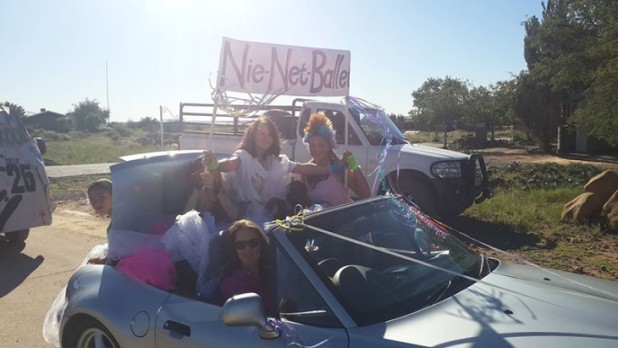The New Observer
April 8, 2016
The self-sufficient—and world famous—Afrikaner town of Orania in South Africa turned twenty-five last week—and held a well-attended carnival event to celebrate.
The town now boasts just over 1,800 residents, 100 hundred businesses, more than 300 children are in its schools in any one year, and the town’s municipality managed a budget of more than R27 million in 2015—among its many other achievements.
The festival kicked off last weekend with a music concert and dance, followed the next day by a motorized parade, fun fairs, and speeches—all attended by thousands of people from the town and around the country.
The first evening’s concert was packed out.
The next day saw traditional costume dancing, a motorized parade, horse riding, and a series of events for adults and children alike.
The horses pass one of Orania’s schools, the Orania Akademie.
One of the parade items was an inflatable “little giant”–the symbol of Orania. It is of a man rolling up his sleeves to do manual labor.
In an article on the official Orania blog, the organization’s executive director Jaco Kleynhans said that Orania today stands “head and shoulders” above any other attempt at Afrikaner self-determination.
“Through hard work, and only using Afrikaner labor and our own capital, we have transformed an abandoned and deserted construction camp into a growing, self-sufficient community.”
The town’s critics, Kleynhans wrote, ask why the town doesn’t have more residents and why it is not even “more independent.”
“‘Why do you still pay tax [to the central government]?’ they ask. ‘Why haven’t you yet built a hospital or a university?’ Afrikaners are after all Westerners who are used to the best,” he continued.
Answering these critics, Kleynhans said that in previous times, the Afrikaners had the backing of state institutions to build up their own facilities.
“The problem with which we grapple today is that many Afrikaners still do not realize the full extent of the loss which we suffered [in 1994, when the ANC came to power].”
“The loss of control over our own institutions, and the ability to preserve our language, culture, and civilization was far larger than many Afrikaners realize. To think that Church Square [in Pretoria] would always be some sort of Afrikaner space and that President [Paul] Kruger’s statue would stand there forever indicates the naïve hope which exists among many that we will still be able control things and places, when in fact we lost them a long time ago.”
“Where, however, in South Africa is there a town, a municipality, a museum, a university, or a school which is completely under the control of Afrikaners? We have handed over everything to the majority and now limit ourselves to privately controlled matters.”
“Yet there is Orania. The town, its municipality, its schools, museums, land, monuments, and other institutions are controlled and worked by Afrikaners.
“Everything that you see in Orania was created out of Afrikaner capital. All of us want to see more land, more institutions—a hospital and a university are high on the priority list—and the paying of less tax to the South African state.”
Kleynhans said that organizations in South Africa demanding “instant self-determination” for the Afrikaners were popping up behind computers and fax machines, but the reality is that the chance of complete territorial independence was currently impossible.
“This is why the Orania model of self-determination has stood the test of time. Our model is not populist; We don’t shout ‘freedom!’ from the rooftops and wait for it to fall into our laps.
“We work hard through a strong network of residents, neighbors, and outside supporters, who all contribute toward the ever-growing self-sufficiency of Orania.
“We have good reason to celebrate our growing Afrikaner town’s twenty-fifth birthday. We also have reason to see the oncoming storm clouds and to understand that we have to work even harder to strengthen Orania further.”
 Daily Stormer The Most Censored Publication in History
Daily Stormer The Most Censored Publication in History
